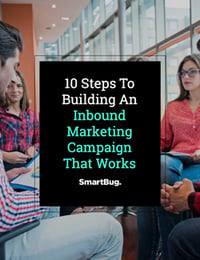
White Paper Marketing: 5 White Paper Types and When to Use Them
November 25, 2011
By Ryan Malone
White papers are a popular tool in business-to-business content marketing. According to a study by Marketing Profs and Junta42 Content Marketing Institute, “B2B Content Marketing: 2010 Benchmarks, Budgets and Trends,” 43% of business-to-business marketers use white papers to reach and retain customers.
Marketers can use white papers to establish thought leadership and to competitively position their product or solution in the marketplace. Customers like reading white papers because they learn more about a product or tactic and find answers to nagging business problems.
The main reason why white papers (and their newer incarnation ebooks) work, is because they are truly educational content and not heavy-handed sales promotions. If you are planning to create a white paper as part of your content marketing strategy, familiarize yourself with these main styles of white papers and when to use each style.
1. Business Benefits White Paper
This type of paper is aimed at a non-technical audience and tells customers how they will benefit from a certain product or offering. A business benefits white paper can work at any point in the sales cycle. Offer this type of paper through white paper syndication, as a call-to-action at the end of a blog post or through links in your e-mail signature or blog commenting signature.
2. Technology Benefits White Paper
Written for a more technically-savvy audience, the technology benefits white paper will go into detail about product features and benefits. This type of paper works best in the later stages of the buying cycle, when the reader has a good idea of why they need a solution, but wants to learn more about the solution and whether it will be a good fit. It’s best to put a more technical white paper behind a registration form, so you can collect contact information and treat each reader as a potential lead.
3. Hybrid Technology and Business Benefits White Paper
This format combines the first two styles together, offering something for everyone. The hybrid white paper includes business benefits with a high level of technical detail and product information. This kind of paper can be offered with or without a registration form. It will meet the needs of most readers, but is not as targeted as styles one or two alone.
4. Product Comparison White Paper
Use a product comparison format to weigh the pros and cons of different competing solutions or vendors and ultimately position one solution or vendor as the best choice in the marketplace. Product comparison white papers are most effective towards the end of the sales cycle, when the reader is already convinced they need a solution, but may be deciding between a few leading vendors. To capture valuable lead information, put the product comparison white paper behind a registration form.
5. Video and Slide Formatted White Papers
Translate white papers into a video or slide format to reach even more potential customers who are searching for content on video and slide sharing websites. To make the content work in these formats, whittle down the text of the white paper into easy-to-digest bullet points. Follow the well-established industry best practices for video marketing or producing slide presentations. For slide share and video versions of the white paper, include visible links to “download the full report.” Video white papers are typically five to seven minutes in length. Some markterers will produced shorter two minute white paper videos that function as an executive summary, highlight the main takeaways of the paper and link to the full text.
There are many other white paper variations and possibilities, each targeted to an ideal reader and a set of marketing goals. Any of of these styles can also be produced as an ebook. Ebooks follow the same logic as white papers, but allow for a more user-friendly landscape design and use more images and graphics than a traditional white paper.
Photo : Flatop341

About the author
Ryan Malone is the founder and Chairman of the Board of SmartBug Media and is a veteran of Deloitte & Touche, Seagate and several venture-backed technology companies. When he's not leading SmartBug and helping clients build high-octane marketing organizations, he's loving his wife and daughters and unsuccessfully learning the guitar. Go Terps! Read more articles by Ryan Malone.






